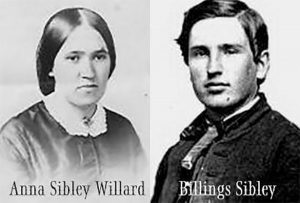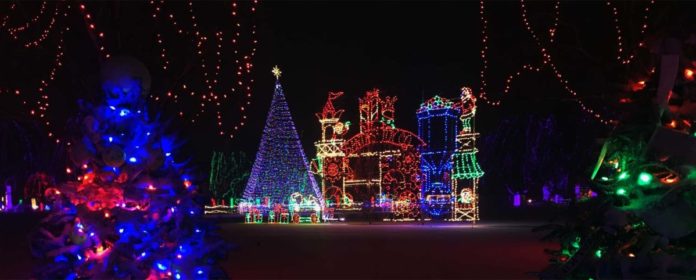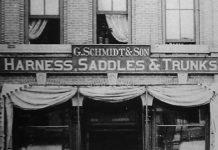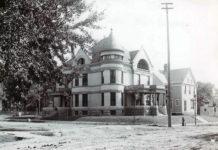As protesters recently demanded the name Sibley be removed from Sibley Park, a curious irony emerged.
William D. Willard, born in Mankato in 1867, earned recognition as one of the charter members of the Mankato Kiwanis Club — the current organizer the of Holiday Lights in Sibley Park.
William’s grandfather Reuben and his mother Anna were early Mankato settlers from the Sibley family of Erie, Pennsylvania. Minnesota Governor Henry Hastings Sibley was born in Detroit, Michigan in 1811. There is no available information linking the two families.
On the one hand, you have a man notorious for his role in the US Dakota War. On the other hand is a family known for doing good in Mankato throughout their lives.
Sibley Mound
Before Henry Sibley’s name was known as the first governor of Minnesota or before he was known as a colonel in the Minnesota State Militia during the US Dakota War, that name was attached to the large hill with a flat top in today’s Sibley Park.
Ever wonder how Mound Avenue got its name?
In the late 1830s and early 1840s, Henry Sibley, then in his twenties, was an explorer and fur trader. On one adventure his party found a camping space beneath a hill near a river.
The hilly area at the confluence of the Blue Earth and Minnesota Rivers was named, “Sibley’s Mound,” and became a marker in the riverside landscape. Ever wonder how Mound Avenue got its name?
Advertisement
[the_ad_placement id=”midstory”]
History is Seldom Simple
Pigeonholing Henry Sibley is not as simple as some would make it.
Sibley had a reputation for understanding the Native Americans inhabiting Southern Minnesota, including Blue Earth County. It was reported that he spoke Dakota.
Sibley, like many of his frontiersman peers, had a relationship with a Dakota woman. His de-facto marriage to Red Blanket Woman resulted in a daughter named Helen Sibley. While the exact circumstances are unclear, it appears that the relationship did not last.
As an army officer, Sibley earned criticism for moving slowly during the outset of the US Dakota War in 1862 and answered his critics by threatening to resign. After the war, the tribunal he oversaw hastily sentenced to death more than 300 Dakota prisoners who were located “east of the Blue Earth River and south of Sibley Mound.”
From all available evidence, there was no apparent intent to honor Henry Sibley’s legacy.
President Abraham Lincoln instructed his aides to reduce the original number from more than 300 to 40, from which the final 38 were executed.
It’s highly unlikely that Sibley was in Mankato on December 26th, 1862. It’s very likely, though, that he was communicating by telegraph from Army headquarters in St. Paul with both President Lincoln, who gave the final order for execution, and with Colonel Miller, the officer on the ground in Mankato. It was Sibley who informed Lincoln that his order of execution was fulfilled.
In August of 1887, the City of Mankato purchased the sixty-acre parcel that would become Sibley Park. In “A Souvenir” by the City of Mankato Park Board, printed in 1899, it is mentioned that Sibley Park takes its name from Sibley Mound.
From all available evidence, there was no apparent intent to honor Henry Sibley’s legacy.
From Pennsylvania to Minnesota

Anna Sibley arrived in Mankato at the age of 16 with her father. She attended the log-cabin Union School, which is roughly in the same location as today’s Union School Building on Mulberry and Broad.
Reuben Sibley, a former Methodist minister, served as Mankato’s Postmaster from 1861 to 1864. Upon his death, his daughter Anna assumed responsibilities as Postmistress since, during the Civil War, there was a shortage of men. At that time, Mankato was little more than a frontier village.
During the Civil War, Anna’s brother, Billings Sibley, fought with other Minnesota Volunteers from Blue Earth County in Tennessee. His title was musician, and he served as drummer and bugler. In a series of letters to Mankato from Tennessee, Billings acknowledged his concerns about the US Dakota War but saw it as his duty to be with the unit of volunteers.
In 1862, at age 20, Anna witnessed the hanging of 38 Dakota men on the Mankato river levee near Front and Main streets, as is told by her son and also her friend, Laura. As horrible as that sight was, and as much as it likely influenced her, she lived a long life in Mankato with a reputation for being gracious, calm and always ready to assist those in trouble.
An Old Mankato Family
Anna married John A. Willard and gave birth to several children, most of whom died young.
Her only daughter, Emma, died at the age of nine as diphtheria swept through Southern Minnesota during the late 1870s and early 1880s. In an obituary for Emma, the local paper said, “Dark was the home when this bright ray of heavenly sunshine was quenched.” William D. Willard described the loss of his sister Emma as a “great blow” to his mother, Anna.
Anna and John were active at the First Presbyterian Church. John was apparently successful because when Anna died, she had considerable wealth for the times. She had a reputation for using her wealth charitably as an outworking of her Christian faith. In her obituary, it is noted how popular the Sibley family was in Mankato.
She had a reputation for using her wealth charitably as an outworking of her Christian faith. In her obituary, it is noted how popular the Sibley family was in Mankato.
William D. Willard lived up to his mother’s example and devoted himself to the community. In addition to his involvement with the Mankato Kiwanis Club, he personally pressed for the forming of the Mankato YMCA in 1892 which is today the Mankato Family YMCA.
For many years, William served on the local school board and was active in the campaigns to build Union, Lincoln, Franklin, and Roosevelt Schools. Schools that many Mankato residents, even today, remember attending as children.
Convergence of Events
This article offers no opinion on whether Sibley Park should be renamed, except, perhaps to say that history is rarely as simple as we’d like to make it.
Driving through the Kiwanis Holiday Lights around Christmastime is a beautiful experience. One can only wonder at the convergence of people and events in Mankato’s past that resulted in families by the carload enjoying the lights in an old city park with a mound at the center.
~~~
Author’s Note: Everything in this article has been researched thoroughly and can be documented. If you have a compelling reason to request documentation for any particular point, you can reach me through the MankatoLIFE.com contact form.




